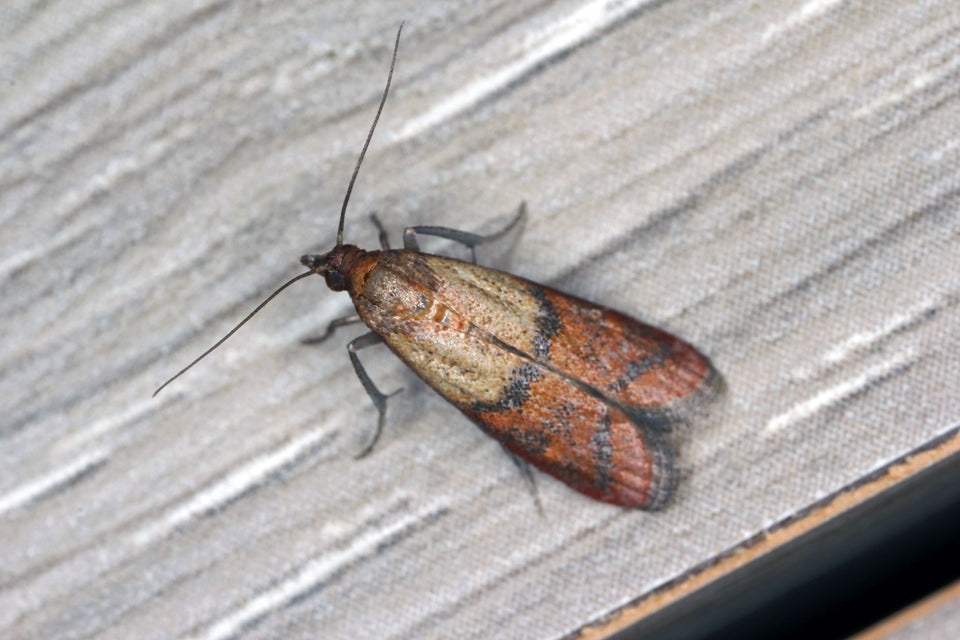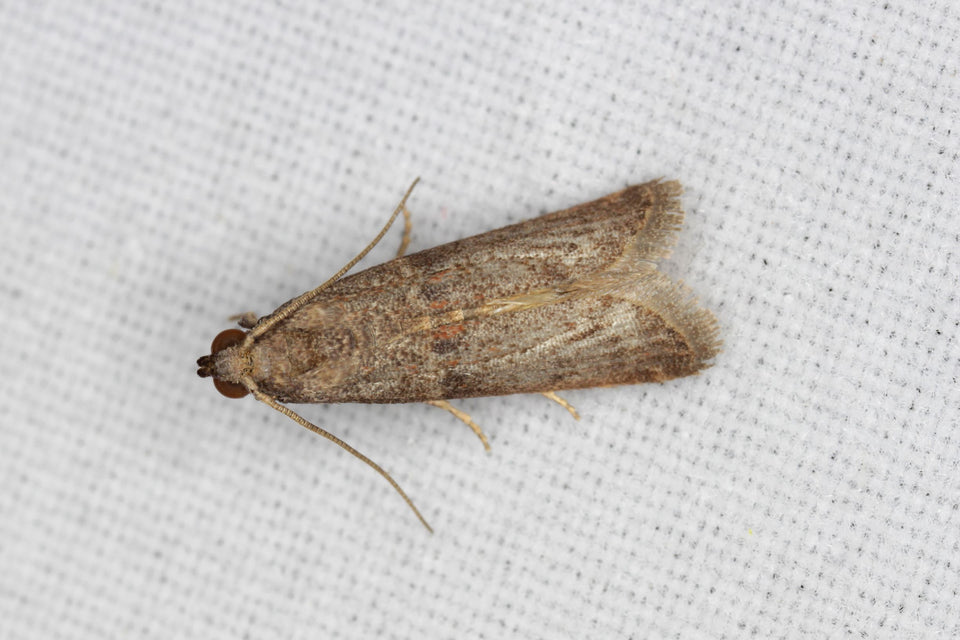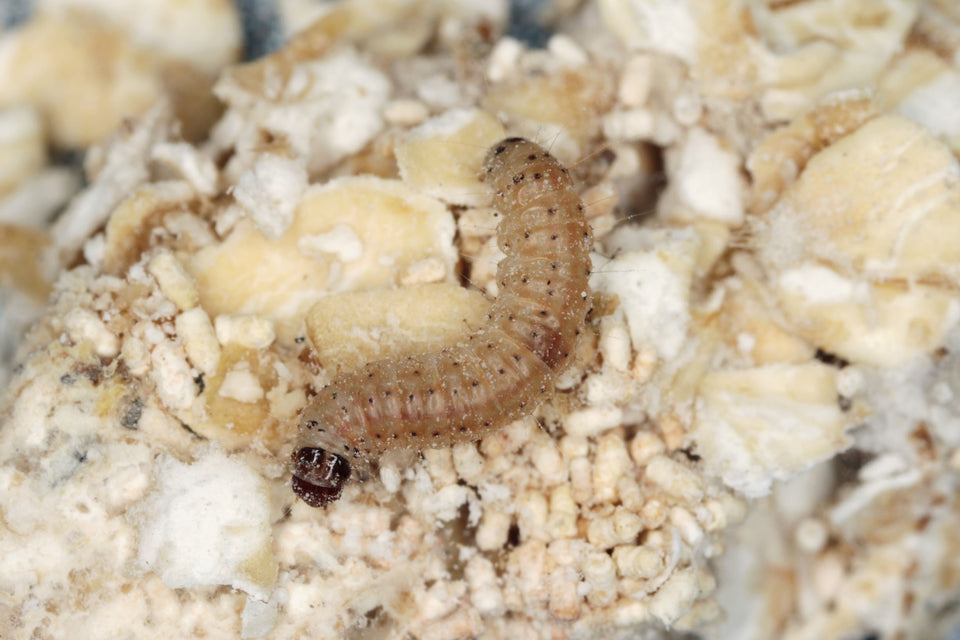How To Get Rid of Grain Moths

Pantry pests, or pests anywhere in the home, can be a serious source of anxiety and stress. No one wants moths around, and they’re devastating when they do somehow sneak into your home - like that unwelcome neighbor who just won’t get the message!
Grain moths are just one of many names for common pantry moths. Finding them in your kitchen cabinets will definitely come as a shock, and you need to act quick. Being able to identify which type of Pantry moth can help you control the situation more effectively.
So, here’s everything you need to know about how to get rid of grain moths. (It probably won’t help with the unwelcome neighbor, but that’s a discussion for another day)
What are Grain Moths?
Grain moths are a group of winged insects that infest and eat grain products, including corn, wheat, oatmeal, and rice.
Some types of “grain moths” are rarer than others, but they do show up in pantries throughout the UK and other parts of the world.
Grain moths are considered pantry pests, because they will contaminate and destroy the foods that they lay their eggs in. Once you have a grain pantry moth infestation, you will need to act quickly to get these kitchen moths under control. We advise using pantry moth pheromone traps as a solution which we will get into a bit later.
Here are some foods that grain moths target:
- Breadcrumbs
- Flour
- Seeds
- Dried beans
- Dry dog and cat food
- Birdseed
- Teas
- Herbs and spices
- Cake and bread mix
- Cereal
- Nuts
- Oatmeal
- Dry rice
- Dried fruit
- Bread
Pretty much anything that can be considered a dry ingredient is a potential target for grain moths.

What do Grain Moths Look Like?
Not all grain moths (pantry moths) look the same. There are actually several different species of moths that eat foods in your pantry, like Indian Meal Moths, Mediterranean Flour Moths, Brown House Moths or White Shouldered House Moths - also referred to as seed moths, and food moths.
If you’re trying to identify which kitchen moth you have, see our food moth identification guide.
A typical grain moth is going to have cream or tan colored wings with brown or reddish markings. The mottling of the wings separates the common grain moth from other pantry moths, like the ones with red, brown, and a black line.

Another grain moth - the Angoumois grain moth - is almost yellowish. You can tell them apart from other grain moths, like the Mediterranean flour moth, by a narrow projection that protrudes from the end of the wing. Their wingspan is about 3/16 inch long.
So unlike your neighbor, these tiny winged moths CAN make it past the front door undetected.

Where do Grain Moths Come From?
All grain moths are going to invade your home by either flying in and seeking out a food source or through the undetected transport of eggs laid on grains, flour, and other foods. Sometimes, you do not even realize that you have brought home a package of infested flour or oatmeal until the flutter of moth wings haunts you at night.
Sometimes, even holiday décor, like Indian corn wreaths, can bring in moths.
So be weary of ‘holiday gifts’ from people you suspect have had a moth problem - even the good neighbors can fall foul of spreading a bit more than seasonal cheer!

How to Get Rid of Grain Moths
Getting rid of grain moths also means understanding how a grain moth infestation starts. It begins with the grain moth eggs being present. Once adult grain moths have mated, the females go in search of a place to lay their eggs. At any time, a female could lay hundreds of eggs.
The eggs will eventually hatch. Sometimes, it’s a week, but it could be months before hatching. The larvae, which look like tiny grubs, will begin feasting on the grains where the eggs had been laid, growing rapidly. Then, they set up cocoons and webs to become mature moths that continue the infestation.
That means that the best time to stop an infestation is to halt the adult moths from laying eggs. Whatever form of unwanted visitor, rule number 1 is to not let them make themselves comfortable in your home.
Here are some steps to help you get rid of grain moths:
- Look for signs of pantry moth infestation. You could find larvae in your grains and other food products, but do not limit your search. Anything that is not completely sealed could be affected. Once you find the points of infestation, you need to remove it.
- After discarding the site of infestation, use a pantry moth spray killer to wipe down the pantry and cupboards. Do the same for sealed cans, jars, containers, and boxes that were near the contaminated food. (Vinegar also kills larva, but a pantry moth killer spray is specially formulated to deal with these pests.)
- Wash any shelf liners with soap and water. Vacuum the pantry, the floor, walls, ceiling, doorway (even the knob and hinges), and when you are done, go over these parts with pantry moth killer spray again. Complete with a mopping.
You can also do the following to ward off any following infestation:
- Store your bulk grains and dry ingredients in the freezer, because moths won’t be infesting your freezer any time soon!
- Use moth repellents, such as lavender, cedar, bay leaves, and mint. food moth pheromone traps are a highly effective option for catching flying moths.
- Keep your pantry and cabinets as clean as possible. Wipe down the kitchen with a moth killer spray designed for kitchen surfaces, mild detergent, and warm water at least a few times a year.

How to Get Rid of Grain Moths
Since all pantry moths, whether found in grain, flour or other foods - have the ability to rapidly multiply, you will have a short amount of time to get the infestation under control. Although they don’t spread any diseases, the food the moth larvae consumes will be contaminated. Be quick to discard the affected items.
After that, do the following:
- Do a careful inspection of your pantry and cupboards. Look for larvae in food packages. Anything that is covered in webbing or cocoons should be thrown out immediately.
- Seal your new food in airtight containers. Plastic and glass are the best protection.
- Vacuum the pantry shelves, walls, and crevices or cracks around the baseboards.
- If you purchase bulk or organic grain, monitor the packages, as they could be the cause of infestation. Never use broken packages.
- Use our food moth pheromone traps to catch flying moths
Grain Moths Be Gone!!
Hopefully, this article has answered your questions about grain moths and how to get rid of grain moths. Though it may seem like a horrible situation to be in, you can quickly overcome the moth scourge if you act swiftly and toss out any affected items. Then, do what you can to prevent any further infestation.
These tiny moths in house may be small, but believe us, they can cause a huge amount of stress, anxiety and a bunch of damage in the kitchen!
Always use treatments and products which are safe for use in kitchens and food preparation areas and be sure to select moth prevention measures, such as food moth traps, which are designed to attract and catch the type of moth you have in your pantry.
See our ultimate guide on how to get rid of pantry moths in the kitchen on our blog.

About MothPrevention
MothPrevention® speak to customers every day about their clothes moth issues - clothes moths are a species that are ever increasing and that can cause significant damage to clothes, carpets and other home textiles.
To date, we’ve helped over 250,000 customers deal with their moth problems. We have developed professional grade solutions including proprietary pheromones and trap design engineered to the highest production standards.





